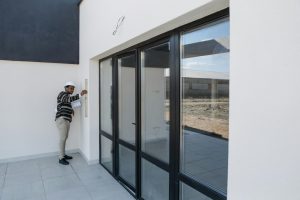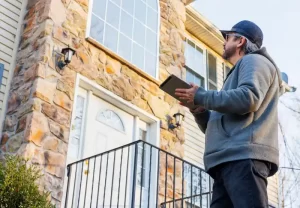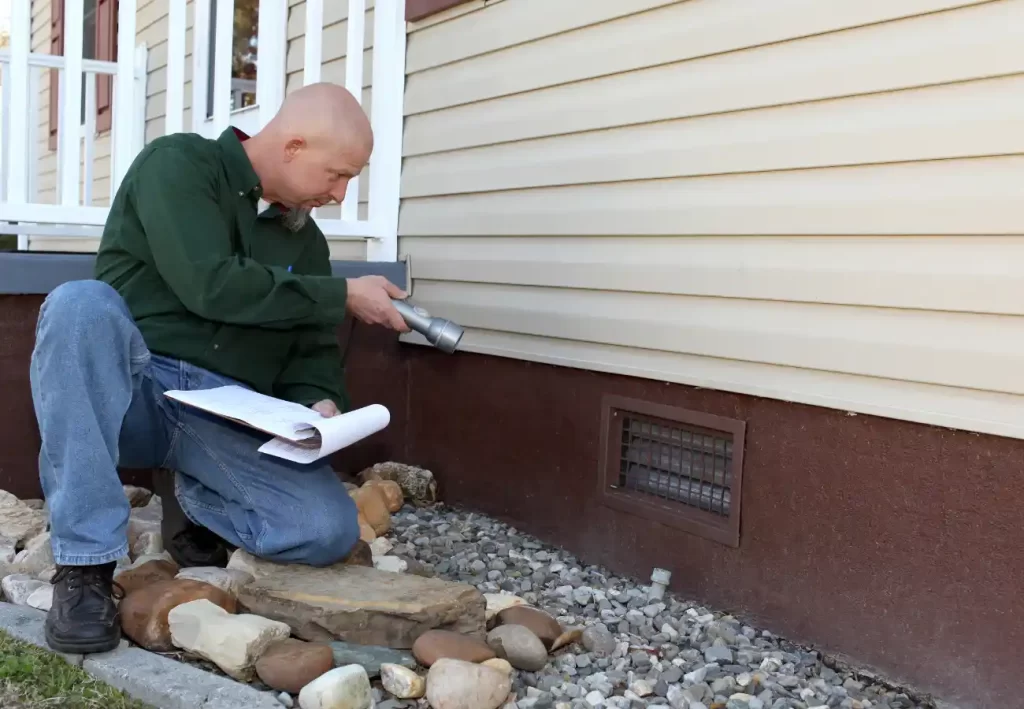The Importance of Residential Building Inspections
A residential building inspection involves a thorough assessment of a home’s condition, identifying any existing or potential issues. Inspectors evaluate various components, such as the roof, electrical systems, plumbing, and structural integrity. These inspections are crucial for ensuring the safety and longevity of a property.
Key Takeaways:
- Regular inspections can help identify potential problems early on.
- Early detection can save homeowners from costly repairs down the line.
Proactive property maintenance through regular inspections not only preserves the home’s value but also safeguards its inhabitants.
1. Roof Problems
A roof inspection often reveals common issues such as damaged shingles, leaks, and rotting fascia boards. Neglecting these problems can lead to severe consequences, including water damage to your home’s interior.
Common Roof Issues:
- Damaged Shingles: Missing or broken shingles expose the underlying structure to the elements.
- Leaks: Water infiltration can damage insulation, ceilings, and walls.
- Rotting Fascia Boards: Compromised fascia can lead to further structural deterioration.
Consequences of Neglect:
Ignoring roof problems can lead to extensive water damage, Mould growth, and even structural issues.
Maintenance Tips:
- Regularly clean gutters and remove debris from the roof.
- Promptly repair any visible damage.
- Schedule annual roof inspections to catch potential issues early.
For more information on the benefits of professional home inspections, visit this link.
2. Electrical Issues
Electrical inspection is a crucial part of any residential building review. Common problems frequently discovered include:
- Outdated wiring: Homes built before the 1960s often have outdated wiring systems that can pose significant fire risks. Aluminum wiring, used between 1965-1973, is particularly prone to overheating.
- Lack of Ground Fault Circuit Interrupters (GFCIs): These devices are essential for preventing electrical shocks, especially in areas like kitchens and bathrooms where water is present.
Faulty electrical systems can lead to severe safety implications, including the risk of electrical fires. Outdated or damaged wiring increases the chances of short circuits and overheating, which can ignite surrounding materials.
Recommendations for updating electrical systems in older homes to meet current safety standards include:
- Replacing outdated wiring with modern, safer alternatives.
- Installing GFCIs in all appropriate locations.
- Conducting regular professional inspections to ensure all components are functioning correctly.
For additional insights into why proper electrical maintenance is vital, you might want to explore The Crucial Role of Home Inspections in Property Purchase.
3. Plumbing Issues
Common plumbing defects identified during inspections include leaky pipes and improper drainage. Leaky pipes, often hidden behind walls or under floors, can lead to significant water damage and Mould growth. Such issues can compromise the structural integrity of the home and pose severe health risks due to Mould exposure.
Potential health risks associated with plumbing issues include:
- Mould growth due to hidden leaks
- Structural damage from prolonged moisture exposure
- Respiratory problems from Mould spores
Regular plumbing maintenance is essential to prevent these problems. Homeowners should:
- Inspect pipes for any signs of leakage
- Ensure proper drainage systems are in place
- Schedule routine professional plumbing inspections
These steps not only help maintain the integrity of the home but also safeguard against potential health hazards.
4. Heating/Cooling System Defects
Heating and Cooling inspection often reveals several common problems. Malfunctioning gas furnaces and dirty air filters frequently top the list. These issues can lead to inefficient heating or cooling, resulting in higher utility bills and reduced comfort levels.
The costs associated with repairing or replacing defective heating and cooling systems can be substantial. For example, a new gas furnace installation can range from $2,500 to $6,000, depending on the model and complexity of the install. Regular maintenance can help mitigate these expenses.
Tips for maintaining your Heating and Cooling system include:
- Regularly replace air filters: A clean filter improves airflow and system efficiency.
- Schedule annual professional inspections: This can help identify and address minor issues before they become major problems.
- Clean around outdoor units: Ensure that the area is free from debris to promote proper airflow.
Investing in regular Heating and Cooling maintenance ensures optimal performance and extends the lifespan of your system. For more insights, please visit this page.
5. Structural Issues
Identifying structural defects during residential building inspections is crucial for maintaining a home’s integrity. Common signs of structural issues include:
- Visible cracks in walls: These can range from minor hairline fractures to significant horizontal cracks, which may suggest foundation problems.
- Uneven floors: Sloping or sagging floors indicate potential issues with the home’s support structures.
Addressing foundation problems promptly is essential to prevent further damage. Ignoring these issues can lead to severe consequences, such as compromised stability and increased repair costs. For homeowners, it is advisable to consult a structural engineer if any signs of damage are detected during an inspection.
For more detailed inspection services, consider booking a professional inspection to ensure your home remains safe and secure.
Regular monitoring and maintenance of the home’s structure can save significant time and money in the long run.
6. Moisture and Mould Problems
Moisture accumulation in homes often stems from poor ventilation and inadequate waterproofing measures. These issues can lead to severe consequences, such as wood damage and Mould growth. Common sources of moisture problems include:
- High humidity levels: Especially in areas like bathrooms and kitchens where water usage is frequent.
- Leaks: From roofs, plumbing, or windows that are not properly sealed.
- Poor ventilation: Lack of airflow can trap moisture, exacerbating the problem.
The health implications linked to Mould exposure are significant. Mould can cause respiratory problems, allergic reactions, and other health issues. Effective moisture control strategies are essential to prevent these risks. Regular inspections and proactive maintenance can help identify potential problem areas early on.
Ensuring proper ventilation and waterproofing measures can mitigate the risk of moisture-related problems. For more information on maintaining a healthy home environment, consider visiting this resource.
7. Tripping Hazards and Other Safety Concerns
Inspectors frequently identify safety hazards that could lead to serious injuries if not addressed. One common issue is driveway cracks, which can cause trips and falls. Additionally, the absence of handrails on staircases poses a significant risk, particularly for elderly residents or young children.
Impact of Neglecting Safety Issues:
- Homeowners might face legal liabilities if someone gets injured due to neglected safety concerns.
- Insurance claims related to accidents can lead to increased premiums.
Common Tripping Hazards:
- Uneven pavement or walkways
- Loose floorboards or tiles
- Rugs without non-slip backing
Taking proactive steps to address these hazards is crucial for maintaining a safe living environment. Regularly inspecting and repairing these areas can significantly reduce the risk of accidents and potential liability.
8. Drainage Problems and Their Solutions
Identifying drainage problems is crucial in preventing water damage to your home. Improper grading around the foundation is a common issue that can lead to water accumulation, damaging the structure over time. Inspectors often find that soil slopes towards the house rather than away from it, which funnels rainwater directly into the foundation.
Proper gutter installation and maintenance are essential for effective rainwater management. Gutters should be free of debris and positioned correctly to channel water away from the home. Downspouts need extensions to ensure water is directed well beyond the foundation. Regular inspections can identify clogged or damaged gutters that may cause overflow issues.
- Tips for homeowners: Check for signs of water pooling near the foundation.
- Ensure gutters are securely attached and free from obstructions.
- Verify that downspouts extend at least 6 feet away from the house.
Addressing these drainage issues promptly can save you from costly repairs and maintain the integrity of your home.
9. Smoke Detectors and Carbon Monoxide Alarms: Essential Safety Devices for Every Home
Smoke detectors and carbon monoxide alarms are crucial safety devices that ensure the well-being of everyone in the household. These devices provide early warnings that can save lives by alerting occupants to smoke or dangerous levels of carbon monoxide.
Importance of Functioning Safety Devices
- Smoke detectors help detect fires in their early stages, giving occupants valuable time to evacuate.
- Carbon monoxide alarms identify the presence of this colourless, odourless gas, which is produced by malfunctioning fuel-burning appliances and can be lethal if undetected.
Common Deficiencies in Older Homes
- Many older homes lack sufficient numbers of these safety devices; some may not have them at all.
- Devices found in older properties often have expired sensors or dead batteries, rendering them ineffective.
- Placement is another issue: smoke detectors should be located on every level of the home, inside each bedroom, and outside sleeping areas. Carbon monoxide alarms should be installed near bedrooms and any fuel-burning appliances.
Regular testing and maintenance of these devices ensure they function correctly, providing peace of mind and enhancing home safety.
10. General Maintenance Issues That Shouldn’t Be Overlooked
Regular attention to general maintenance items is crucial for keeping your home in good shape. Utilising a home maintenance checklist can ensure that key tasks are not forgotten. Here are some common items that require regular attention:
- Changing air filters: Dirty air filters can strain your Heating and Cooling system, reducing its efficiency and lifespan.
- Inspecting caulking around windows and doors: Prevents water intrusion and improves energy efficiency.
- Cleaning gutters and downspouts: Helps avoid water damage to your home’s foundation.
Ignoring these minor repairs can lead to escalating costs if left unaddressed. For example, neglecting a small leak in the roof can result in extensive water damage, requiring costly repairs to both the structure and interior of your home. Regular upkeep not only preserves the home’s value but also ensures a safe living environment.
Conclusion: Prioritising Regular Inspections For A Safer And More Valuable Home
Regular building inspections should be a key part of your property maintenance strategy. Inspections identify potential issues early, preventing costly repairs and preserving the home’s value. By taking proactive measures, you safeguard both your investment and the safety of your home. Prioritise these inspections to ensure a safer living environment and maintain your property’s worth over time.
Frequently Asked Questions
A residential building inspection is a thorough evaluation of a home’s condition, aimed at identifying potential issues before they become costly repairs. Regular inspections can help homeowners discover problems early on, ensuring the safety and longevity of their property.
Common roof issues include damaged shingles, leaks, and rotting fascia boards. Neglecting these problems can lead to significant water damage inside the home. Homeowners can prolong their roof’s lifespan by maintaining regular cleaning and making prompt repairs.
Electrical inspections frequently reveal outdated wiring and the absence of Ground Fault Circuit Interrupters (GFCIs). These faults pose safety risks, including the potential for electrical fires. Updating electrical systems in older homes to meet current safety standards is highly recommended.
Common plumbing issues include leaky pipes and improper drainage, which can lead to Mould growth due to hidden leaks. Regular plumbing maintenance is crucial to prevent these major problems and associated health risks.
Homeowners should regularly check for common Heating and Cooling issues like malfunctioning gas furnaces and dirty air filters. Maintenance tips include scheduling professional inspections, changing filters regularly, and addressing any repairs promptly to ensure optimal performance.
Moisture accumulation due to poor ventilation or inadequate waterproofing can lead to Mould growth, which poses serious health risks. Implementing effective moisture control strategies is essential for maintaining a safe living environment.
Subscribe To Our Newsletter
Get updates and learn from the best
More To Explore

Common Issues Found by Private Building Inspectors in Adelaide
Investing in property is one of the most significant financial decisions you’ll ever make, and ensuring it’s a sound investment starts with a thorough inspection. Private building inspectors in Adelaide act as your trusted allies, uncovering hidden issues that could impact the safety, value, and longevity of your property. From structural defects and pest infestations

Why Hiring a Residential Building Inspector is Crucial for Homebuyers
Buying a home is a major investment—probably one of the most significant financial decisions of your life. While a property may appear flawless on the surface, hidden defects and structural issues could turn your dream home into a financial nightmare. From foundation cracks to electrical hazards, unnoticed problems can lead to costly repairs down the


